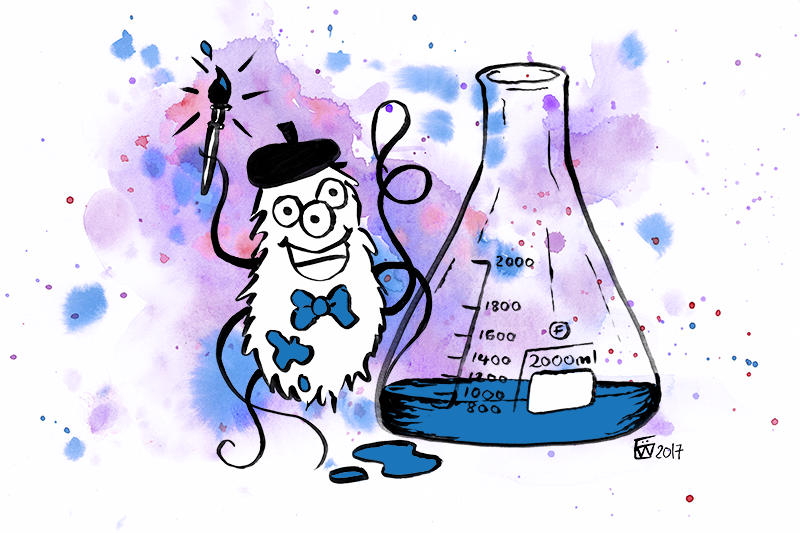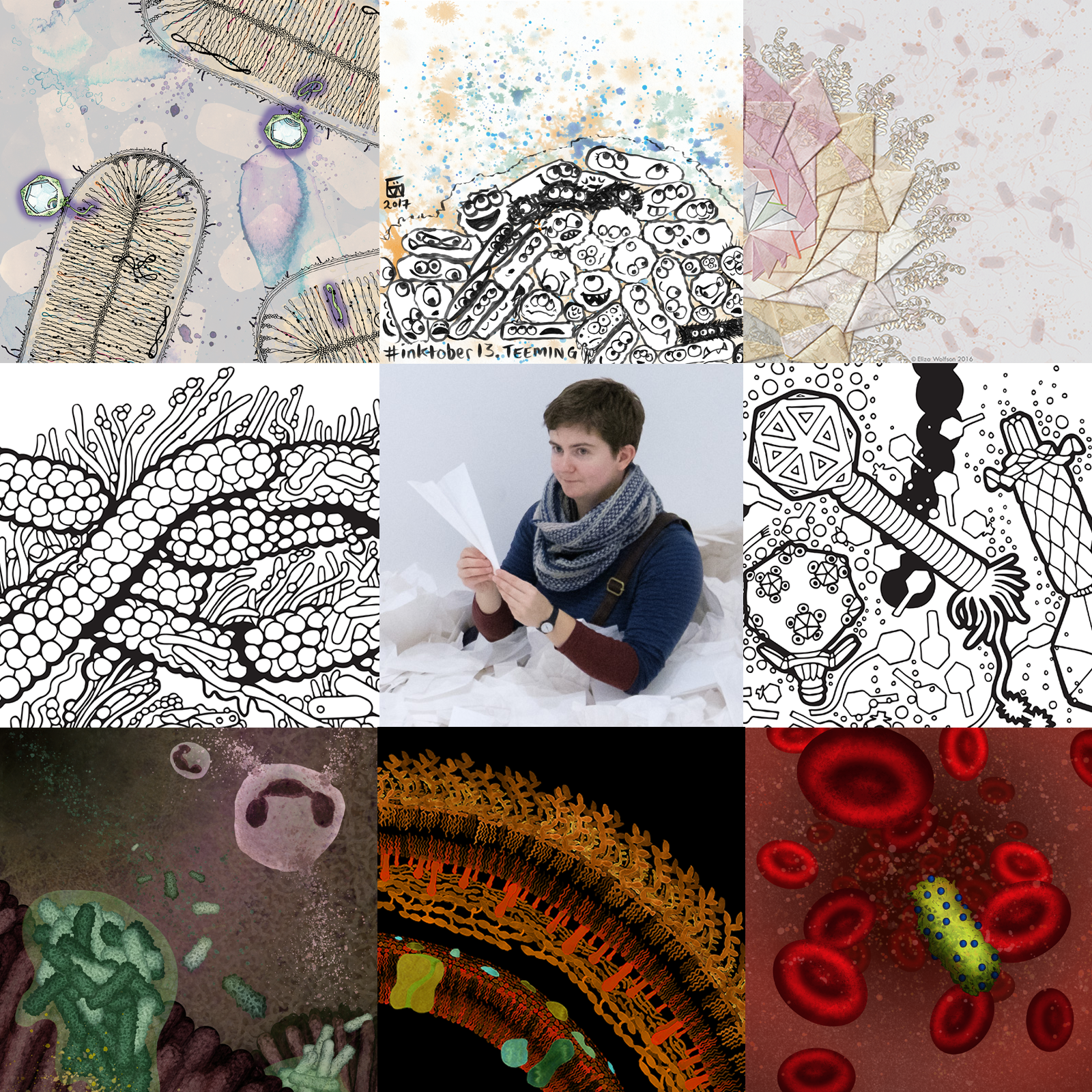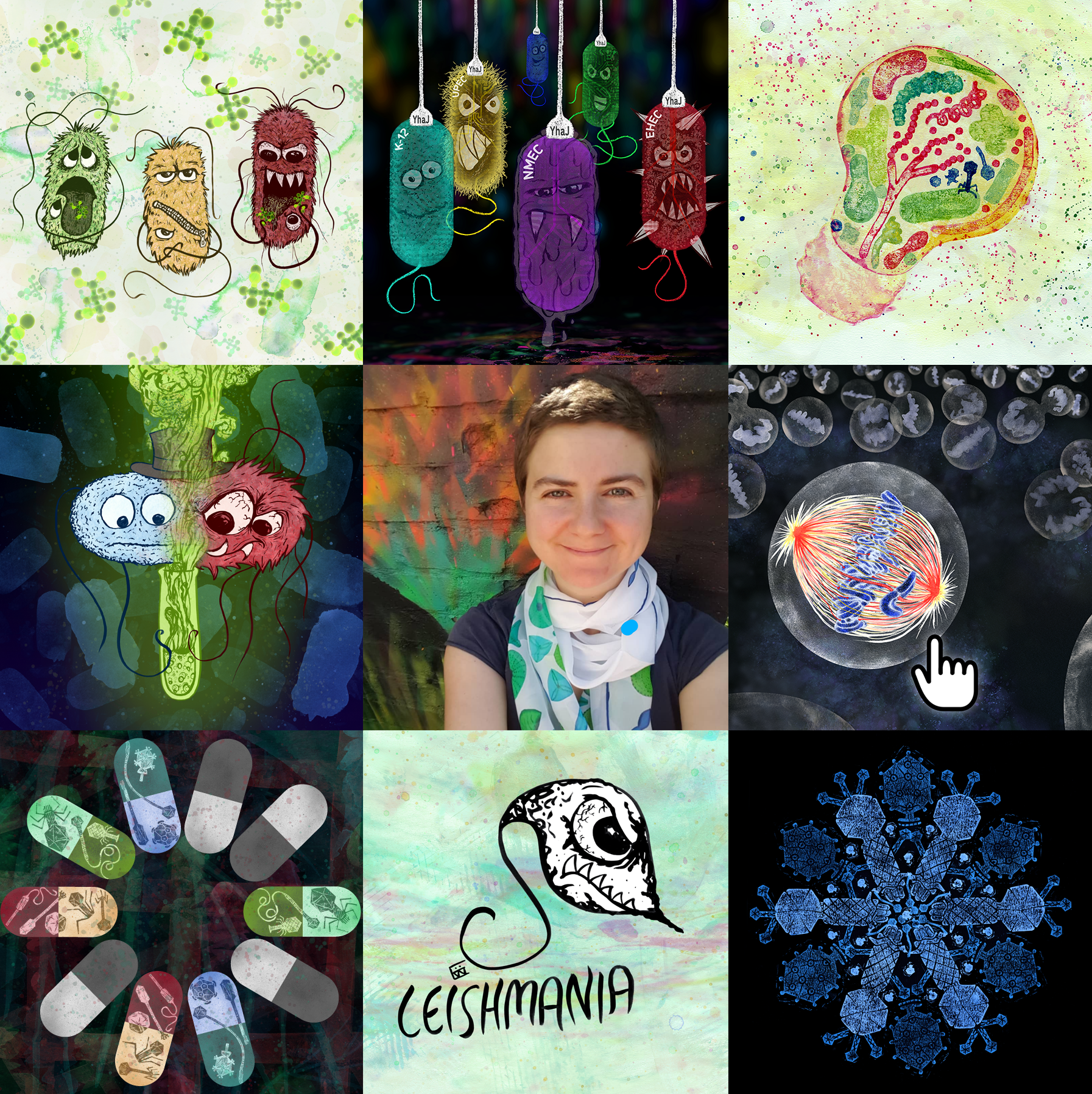From time to time, I get an email in my inbox from an artistic scientist asking how I became a freelance scientific illustrator. The cool thing about this job is there are lots of ways to make it work for you, and to be honest, I’m still amazed I get to do it! There isn’t one way it works, but here’s my story and a few tips I’ve found useful along the way.

I was always someone who could never really decide between art and science. I originally planned to study English, but changed my mind at the last minute and reapplied for biology. Then I got through the slow beginning of undergrad biology by promising myself I’d do an art foundation afterwards, until the science got interesting. So interesting that I did a PhD in microbiology and a couple of cool postdocs, but I always spent time on science communication and illustration where the situation allowed. I illustrated and art edited for university science magazines, designed and illustrated scicomm games and made lots of figures for my labs’ papers, posters, teaching and research presentations.
Then I ended up in a postdoc I didn’t like, shortly after my parents had died. I didn’t have the emotional energy to push through it, so I left that postdoc halfway through and took some time out to draw bacteria and regroup. It felt good, so I gave myself a year to see if that might be something I could do more of. Importantly, I spread the word that this is what I was doing. That was over 5 years ago. It still feels like flying by the seat of my pants sometimes, but it also still seems to be viable. I recognise this is partly because my parents died – I had a financial buffer at the beginning – but also partly because I knew enough scientists who knew my work to get started with commissioned work. So this isn’t a career path to emulate – it was a bit crash and burn and hope!

However, if you are a scientist of artistic bent that wants to do science illustration professionally, here are a few (not exhaustive) things you can do to help it along:
- Save as much money as you can to give you a bit of a buffer when you take the plunge – 6 months salary at least, unless your costs are very low. This is the bit that absolutely sucks and biases the area towards privilege.
- Careers advisers would say you need to ‘build a network’, but all this really means is tell people what you’re up to, get them rooting for you, and get work by word of mouth. It helps hugely to have a bunch of people to commission you from the beginning. In my case, this was past scientists I’d worked with as a postdoc or met at conferences.
- Build a portfolio of art on subjects and in styles you want to do more of. People who commission illustrations generally do this on the basis of what they’ve already seen. Make it easy for them, with accessible examples of your work (this is mostly what a website and social media is for). Who knows, they may think of you and say, ‘Can you do it like that for me, but with this other thing?’
- Teach yourself to use the software you need – I’m forever learning and that’s part of the fun. If you’ve had to use all sorts of lab software, it should be easy enough for you to have a good fiddle to find out what works. Don’t be intimidated, just dabble!
- Choose a field of expertise. If you know about something specific and commissioners that are expert in that thing know this, they may seek you out because you may be more able to interpret what they want better than somebody who doesn’t. With time it gets easier to expand from this, so it doesn’t have to be limiting.
- Be aware of what (and who) else is already out there – try not to step on too many toes. I think there should be more than enough work for anyone who fancies it but try and offer something unique to you. Plus, when you’re more established and busier, spread the love by recommending people for work you can’t do and help build a friendly community. Illustration can be quite a solitary profession, so try not to make it more so!
- Be open and flexible with how clients like to work with you but set boundaries at the beginning. It’s very variable – depending on the client, the process can be quite collaborative, but it doesn’t have to be. However, if you both know what timing, costs and usage to expect at the beginning, nothing can’t be achieved without a bit of communication in between.
- There are lots business models to be aware of beyond getting commissions – selling originals, prints, print on demand, craft fairs, etsy, workshops, grants and residencies etc. There are pros and cons for all of them – be open minded and find what mix works for you.
- And finally, persistence. A certain amount of getting work is just having hung around for long enough for people to think of you as someone who does that thing, which takes time.

DISCLAIMER – I’m not in it for the money. I earn enough to live, and to begin with savings helped with that. When I started, I didn’t even charge enough for my work for it to be sustainable. I didn’t realise I was doing this until I was busy all the time and still living off savings (effectively subsidising my clients). It’s hard work to get people to pay for sciart and scicomm, but you shouldn’t do it for free – that devalues the whole field. I’m still finding my way on pricing, because you need to intrinsically value your time and skills and have enough confidence that other people will too. Which is pretty difficult after academia! On top of this, there are always extremely talented postdocs doing this ‘for the love of it’ – I did that too. You have to compete with them and still be able to pay the rent. I did this by establishing strong client relationships to demonstrate my value and with time (and discussion with clients) increased my rates as I realised how unsustainable my starting rates were. Get people on board and hopefully they will pay you enough for you to get by. However, if you never hear someone say, ‘That’s too expensive!’, then you’re probably not charging enough.





